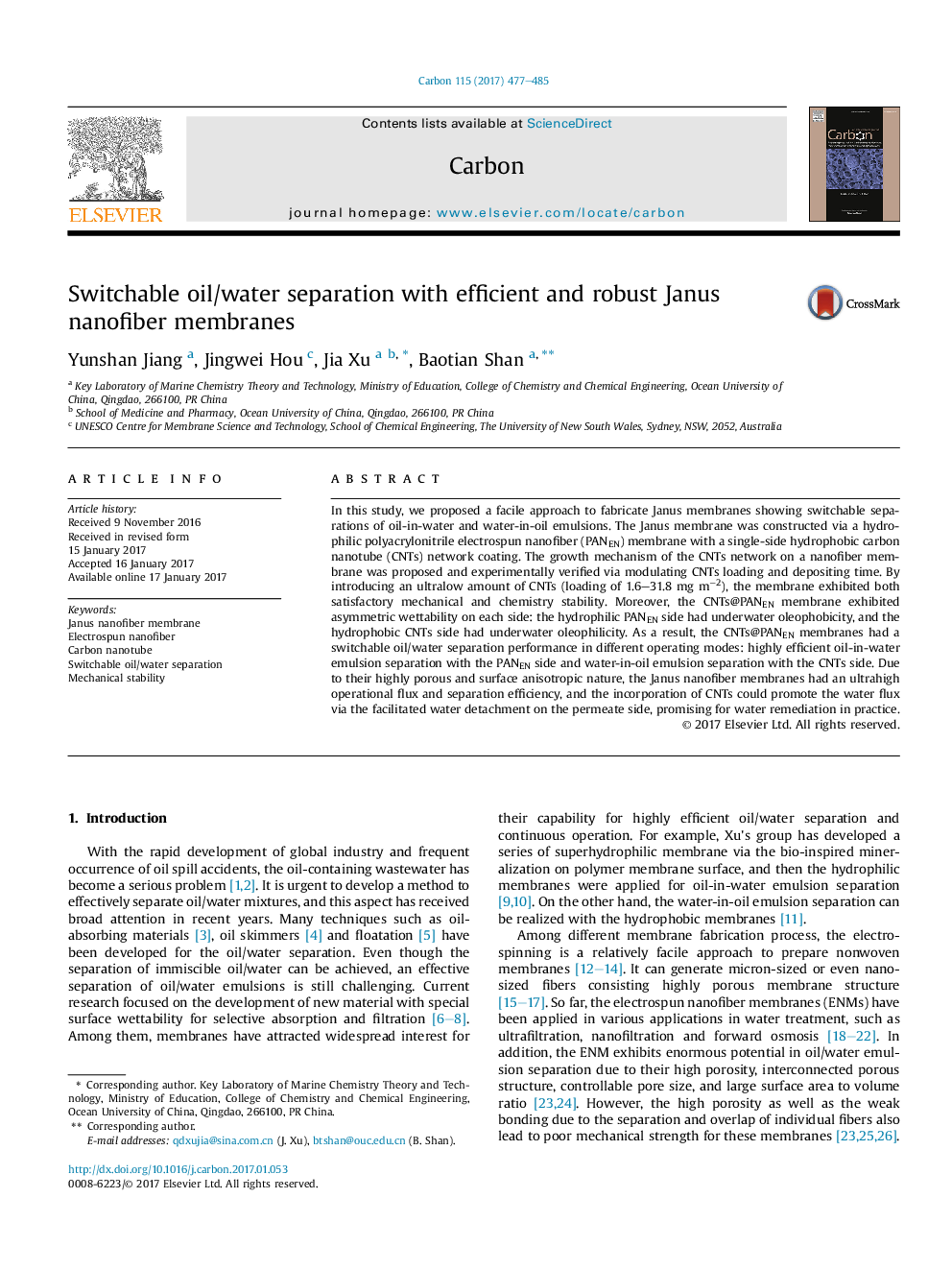| Article ID | Journal | Published Year | Pages | File Type |
|---|---|---|---|---|
| 5432291 | Carbon | 2017 | 9 Pages |
In this study, we proposed a facile approach to fabricate Janus membranes showing switchable separations of oil-in-water and water-in-oil emulsions. The Janus membrane was constructed via a hydrophilic polyacrylonitrile electrospun nanofiber (PANEN) membrane with a single-side hydrophobic carbon nanotube (CNTs) network coating. The growth mechanism of the CNTs network on a nanofiber membrane was proposed and experimentally verified via modulating CNTs loading and depositing time. By introducing an ultralow amount of CNTs (loading of 1.6-31.8 mg mâ2), the membrane exhibited both satisfactory mechanical and chemistry stability. Moreover, the CNTs@PANEN membrane exhibited asymmetric wettability on each side: the hydrophilic PANEN side had underwater oleophobicity, and the hydrophobic CNTs side had underwater oleophilicity. As a result, the CNTs@PANEN membranes had a switchable oil/water separation performance in different operating modes: highly efficient oil-in-water emulsion separation with the PANEN side and water-in-oil emulsion separation with the CNTs side. Due to their highly porous and surface anisotropic nature, the Janus nanofiber membranes had an ultrahigh operational flux and separation efficiency, and the incorporation of CNTs could promote the water flux via the facilitated water detachment on the permeate side, promising for water remediation in practice.
Graphical abstractDownload high-res image (310KB)Download full-size image
